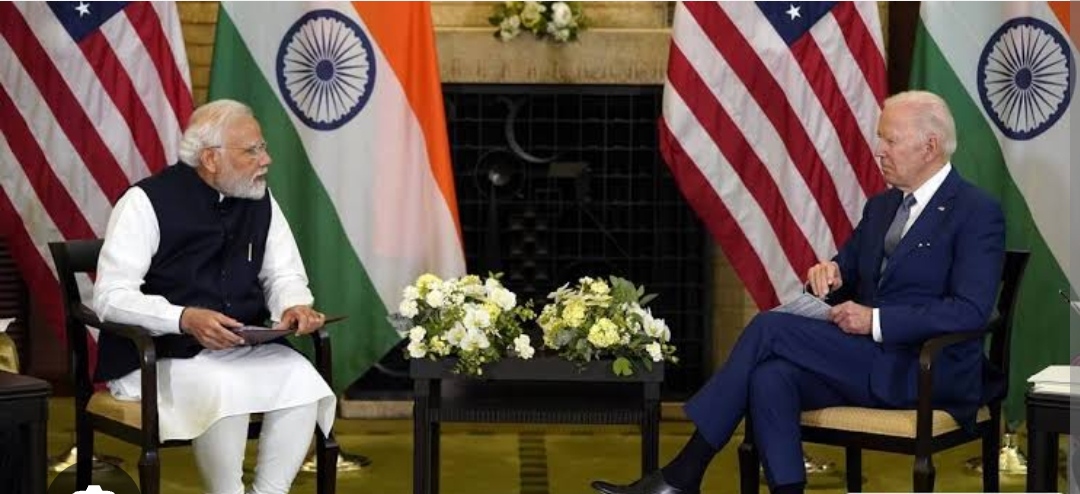Economic strategies of the US and India

It was recently reported how US officials pleaded with India to roll back its laptop licensing policy by lobbying behind the scenes. In August 2023, the Indian government had suddenly imposed a licensing regime on laptops and tablet imports with immediate effect, citing the need to “ensure trusted hardware and systems” entering India. The move was to protect the country from Chinese malware.
However this move also gave a much needed shock also to the US computer industry. The US government officials, represented by US Trade Representative Katherine Tai, expressed their worries. Then based on pleas from Washington, New Delhi postponed the implementation of the licensing policy, then proposed a simpler import registration process, and ultimately cancelled this decision.
Although companies like Dell and HP managed to escape unharmed with the help of the US government, US companies still worry whether India will throw out the one-sided WTO rules and whether it may suddenly introduce other regulations.
Amid increasing global pan-securitization, mostly against Chinese malware, the Indian government is constantly ensuring a series of economic policies and measures because of real security concerns from many sides. India is also promoting self sufficiency, it is trying to minimize imports and encouraging key global industries to move their supply chains to India.
The laptop market scale in India is about INR 70000 Crores annually, with about 65 percent of laptops imported, with local Indian brands only occupying a small market share.
Therefore, the Production Linked Incentive (PLI) scheme 2.0 was approved by the Indian government in May 2023 for the development of IT hardware. Even a small percentage of malware infected hardware can play havoc. India therefore cannot permit import of such malware infected hardware Also India needs to promote the Make in India initiative in this Sector too.
Under this India’s shift toward Make in India and security concerns, Chinese companies are likely to face the brunt and face the most severe crackdown because of malware.
Some of the US companies are no exception.
India’s requirement for data localization, as no company / country can dictate to India any more, has put pressure on US companies such as Mastercard, Amazon and Microsoft with their e-commerce rules.
Now India is having its own rules ( closely monitored ) and all foreign companies who wish to operate in India will have to abide by these. This will surely increase the operating costs of the US companies in India.
The US is requesting India to reconcile their digital policies under the Indo-Pacific Economic Framework, but the India will still maintain the basic stance and demands without compromising.
Clearly, although the US and India have formed a “convergence” to some extent in their efforts to have better trade relations there are still huge differences in their economic and trade policies toward each other.
The fundamental reason for this is that while the US is emphasizing economic and manufacturing, India is emphasizing agricultural, manufacturing, labour and Services issues too. India is increasingly adopting policies, promoting export of Services /manpower, the area in which it has huge advantage of young and educated population.
New Delhi’s promotion of Make in India and Washington’s pledge to “bring back manufacturing” have created a bit of competition rather than complementary positioning. Similarly, New Delhi is satisfied with its trade surplus with the US, but this has displeased Washington.
During his presidency, former president Donald Trump was deeply concerned about India’s $25.2 billion trade surplus with the US (in 2018), harshly criticizing India as the “tariff king” and as a consequence terminated India’s designation as a developing country under a trade program – Generalized System of Preferences. India too retaliated as now no one can dictate any terms to India ….only two way mutual negotiation.
In recent years, India’s policy makers have started developing India centric strategic view of the geopolitics. India will not tow anyone’s line or be a camp follower. India believes in a multipolar world where India will be one of the major poles.
Obviously, New Delhi’s strategic community does not fear in China’s rise as do the Americans and West Europeans. India is capable of dealing with China on equal terms on its own and has no p reason to align itself with the US, as the Chinese think.
Any analyst with strategic thinking can easily see that a rising India, which is already the third largest economy in PPP terms (true indicator of any economy) and by 2027 will surpass Japan and Germany and emerge as the third-largest economy in even USA dollar terms (a biased indicator of any economy ) cannot possibly be ignored by any power major or minor.
No wonder now the whole world has started regarding India as a major manufacturing centre of the world. Accordingly Washington and New Delhi announced the US-India initiative on Critical and Emerging Technology (iCET) in May 2022 to elevate and expand the bilateral strategic technology partnership and defence industrial cooperation between the governments, businesses and academic institutions.
The two sides endeavoured to expand international collaboration in a range of areas – including artificial intelligence, quantum technologies and advanced wireless – to build a robust innovation ecosystem between them.
India is already having defence industrial cooperation with Russia right from the Soviet Union das.



